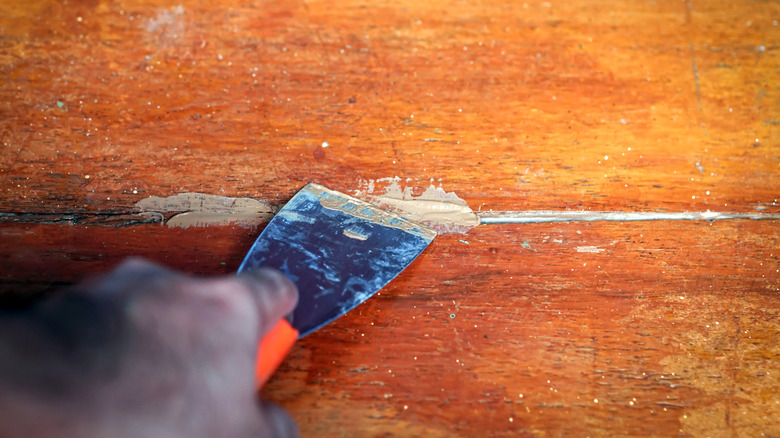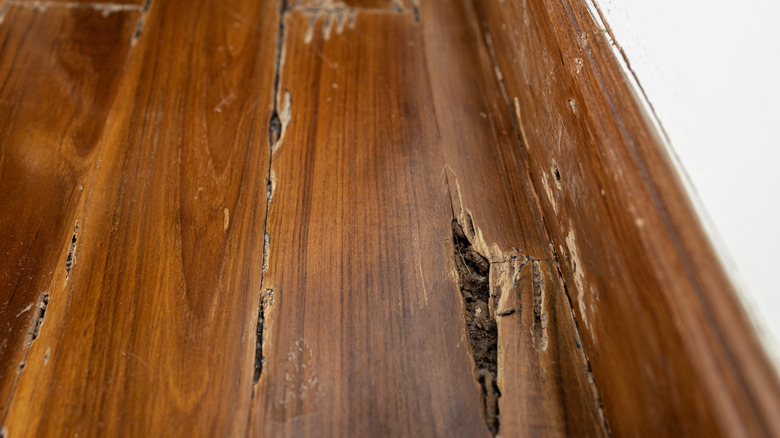The Dos And Don'ts For Using Wood Filler On Hardwood Floors
Wood filler offers a fix for certain hardwood floor damage, whether you're dealing with regular wear, household bugs that can destroy your hardwood floors, or another type of damage. But this product can also make other issues worse. Wood filler consists of wood byproducts and a binder in a paste-like material that's easy to pack into gaps on your flooring planks. It binds to the wood and hardens to fill the space. Once it hardens, the wood filler isn't pliable. Because the hardened filler stays rigid as the wood shrinks and expands, the filler can eventually crumble. It also lacks the grain pattern of real wood, which makes large areas look out of place.
One of the biggest don'ts of using wood filler on hardwood floors is using it to fill large damaged spots in your flooring. Large holes, major gaps, noticeable dents, and deep scratches stand out more when you pack them with wood filler. The lack of grain and difference in texture create a large, smooth area that doesn't look the same as the rest of the plank. If the hole is small enough for wood filler, it should dry in an hour or less. Avoid filling any holes that are larger than 1/4 inch.
You should also avoid using wood filler when filling long cracks or wide gaps between hardwood floor planks. The gaps shrink and expand as the humidity levels fluctuate in your home. That causes the filler to crumble and look like chunks of debris stuck in the gap.
How you should use wood filler on hardwood floors
Instead of opting for the first product you see, you should choose wood filler that matches the wood species and the area of the hole — many species of wood have darker and lighter areas that need different filler colors. You should also only use wood filler on small holes and chips or shallow scratches. Anything larger won't look natural, and the filler may fail over time. The best time of year to fix the gaps in your hardwood flooring is the summer when it's humid and the wood has expanded. If you wait until the wood is dry and shrinks, the filler will crumble or get pushed out of the gap once the wood expands again.
Make sure you also clean out the hole or gap, including loose wood remnants or previous filler products. If the hole is large, apply several thinner layers of wood filler. As it dries, the wood filler shrinks, and the shrinkage is worse on larger holes. Add a layer to a large hole, allow it to dry, and apply a little more. Repeat that process until you fill the hole completely.
The proper way to use wood filler requires you to wait until the filler product is completely dry before you sand it to get optimal results. You can check by doing a test pass with the sandpaper. Wait for it to dry longer if the filler clumps up in the sandpaper. When you sand the filler, start with 120 grit sandpaper to help remove the excess product before switching to 180 grit sandpaper.

